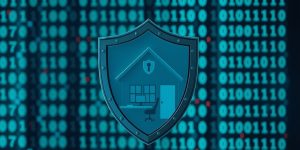In the digital age, safeguarding a startup’s online presence is not just a technical necessity but a critical component of business integrity. As cyber threats evolve, it’s imperative for startups to understand the diverse threat landscape and to implement proactive security measures, ensuring their operations are fortified against potential cyber incidents. This article explores the essential strategies for startups to establish a robust website defense, from assessing risks and adopting advanced technologies to fostering a security-centric culture and engaging in strategic cybersecurity partnerships.
Key Takeaways
- Understanding the specific cyber threats facing your business is crucial for implementing tailored security measures effectively.
- Leveraging AI and machine learning can significantly enhance predictive defense capabilities, preventing threats before they materialize.
- Creating a security-first company culture involves integrating security into daily operations and comprehensive employee training.
- Continuous monitoring and a well-crafted incident response plan are vital for maintaining security and reacting promptly to threats.
- Strategic partnerships with cybersecurity experts and managed IT service providers can strengthen your overall security posture.
Understanding the Cyber Threat Landscape
Assessing Risks Specific to Your Business
To protect your business website from cyber attacks, a comprehensive understanding of the cyber threat landscape is imperative. This begins with a meticulous risk assessment, which serves as the cornerstone of any robust cybersecurity strategy. By identifying potential threats, such as cyber threats, power outages, or hardware failures, businesses can tailor their security measures to their specific needs.
Risk assessments play a vital role in illuminating the shadowy corners where threats lurk within a business’s digital infrastructure. Utilizing sophisticated tools to scan for vulnerabilities allows for a strategic, informed approach to cybersecurity. This not only addresses current threats but also prepares for future challenges, ensuring the resilience of internet safety.
The following key components are essential in a well-devised business continuity plan:
- Risk Assessment: Deciphering threats and implications.
- Asset Management: Ensuring valuable assets are protected.
- Disaster Recovery: Preparing for swift restoration after an incident.
- Mitigation: Implementing measures to reduce risk impact.
- Resilience: Building the capacity to quickly adapt and recover.
Staying Informed on Emerging Threats
In the ever-evolving realm of cybersecurity, staying informed about emerging threats is not just beneficial; it is imperative for the survival and resilience of any business. Cyber threats rapidly evolve, often outpacing the defenses that organizations have in place. To protect your business website from cyber attacks, it is essential to review common vulnerabilities and exposures (CVEs), and to keep abreast of threat intelligence and security advisories from leading research organizations.
A proactive approach involves regularly updating your knowledge base with the latest research and insights. For instance, Tenable Research provides a wealth of data, including the assessment of vulnerabilities with a vast array of plugins and the disclosure of numerous vulnerabilities since the beginning of 2019. The median time for coverage of high-profile issues is less than 24 hours, highlighting the speed at which the threat landscape changes.
| Metric | Detail |
|---|---|
| Vulnerabilities assessed | 83,000+ with 174,000+ plugins |
| Vulnerabilities disclosed | 506 since January 2019 |
| Median time for coverage | <24hrs for high-profile issues |
By integrating this continuous flow of information into your risk management strategy, you can ensure that your security measures are up-to-date and effective. Managed IT service providers can be instrumental in this process, offering thorough risk assessments and utilizing sophisticated tools to scan for and identify potential threats.
The Role of Risk Management in Cybersecurity
Risk management is a cornerstone of effective cybersecurity, serving as the blueprint for safeguarding digital assets. Risk assessments are pivotal, as they identify vulnerabilities and guide the strategic allocation of resources. By understanding the importance of cybersecurity for small businesses, companies can tailor their defenses to the unique challenges they face, including the emerging risks of ransomware-as-a-service and AI-powered attacks.
A proactive risk management approach involves continuous evaluation and adaptation. It’s not just about reacting to incidents but also about anticipating potential threats and mitigating them before they materialize. Key takeaways for businesses include the implementation of robust security measures, the development of a comprehensive incident response plan, and the cultivation of awareness throughout the organization.
To encapsulate the essence of risk management in cybersecurity, consider the following points:
- Regularly update and patch systems to close security gaps.
- Employ encryption to protect sensitive data in transit and at rest.
- Foster a culture of security awareness among employees.
- Engage in active monitoring and threat intelligence to stay ahead of cybercriminals.
Strategic Implementation of Advanced Security Technologies
Customizing Security Solutions for Unique Business Needs
In the realm of cybersecurity, one size does not fit all. Businesses must tailor their security measures to address the specific challenges and risks they face. This customization is crucial for small businesses, which often require a different approach to security than larger corporations. By choosing the right security software and ensuring regulatory compliance, small businesses can create custom security strategies that not only protect against cyber threats but also support business growth.
To effectively customize security solutions, businesses should consider the following steps:
- Evaluate the unique threats and vulnerabilities specific to the business environment.
- Select security technologies that align with the company’s operational needs and budget.
- Implement security policies and procedures that are both robust and flexible enough to adapt to changing threats.
- Regularly review and update the security measures to maintain effectiveness and compliance with evolving regulations.
By taking these steps, businesses can develop a security framework that is both comprehensive and adaptable, ensuring a proactive defense against the ever-evolving cyber threat landscape.
Integrating AI and Machine Learning for Predictive Defense
The integration of Artificial Intelligence (AI) and Machine Learning (ML) into cybersecurity frameworks marks a significant advancement in predictive defense mechanisms. AI and ML algorithms excel in detecting patterns and anomalies that may indicate a cyber threat, allowing for preemptive action to be taken before an attack can fully manifest. This proactive approach is essential for maintaining robust security in an ever-evolving cyber threat landscape.
By analyzing vast amounts of data, AI-driven systems can identify potential risks and suggest measures to mitigate them. These technologies are particularly effective in securing Internet of Things (IoT) devices, which are increasingly targeted by cybercriminals. The implementation of AI and ML not only enhances threat detection but also streamlines the response process, ensuring that threats are neutralized swiftly and efficiently.
To fully leverage the benefits of AI and ML in cybersecurity, businesses must ensure that their security teams are well-versed in these technologies. Continuous education and periodic audits are crucial for keeping pace with the latest developments. Collaborating with web security best practices, businesses can create a formidable defense against cyber threats.
Best Practices for Data Encryption and Secure Storage
In the realm of startup security, data encryption is a cornerstone of protecting sensitive information. By encoding data in such a way that only authorized parties can access it, startups can significantly reduce the risk of data breaches. It is imperative to use robust encryption protocols and to manage encryption keys securely to ensure that, even in the event of a security breach, the encrypted data remains indecipherable to unauthorized users.
Secure storage goes hand-in-hand with encryption. Startups should adopt a multi-layered approach to storage security, which includes regular updates to backup software and the implementation of access controls. These measures are vital in protecting backups from ransomware attacks, which often target less secure data repositories. A best practice is to maintain multiple backup locations, both on-premises and in the cloud, and to ensure that these backups are immutable—meaning they cannot be altered or deleted by anyone, including cybercriminals.
To encapsulate the importance of website protection for startups, it is essential to implement strong authentication, secure infrastructure, and educate employees. Understanding common vulnerabilities can significantly reduce the risk of attacks, safeguarding the startup’s valuable information and maintaining trust with customers.
Cultivating a Security-First Company Culture
Incorporating Security into Daily Operations
In the modern business environment, robust website protection strategies are crucial for business continuity. To ensure a secure online presence, companies must integrate a variety of security measures into their daily operations. These measures include the deployment of SSL certificates, regular security audits, comprehensive DDoS protection, meticulous firewall configuration, and the establishment of employee training programs.
By encouraging the adoption of these security practices as a core aspect of the company’s culture, businesses can create a resilient infrastructure. This infrastructure is not only capable of withstanding cyber threats but is also designed to adapt and evolve alongside them, ensuring long-term security and stability in a dynamic digital landscape.
To effectively incorporate security into daily operations, consider the following steps:
- Conduct regular security audits to identify and mitigate vulnerabilities.
- Implement SSL certificates for all web services to ensure encrypted communications.
- Configure firewalls to protect against unauthorized access and potential breaches.
- Develop continuous monitoring systems to detect and respond to threats in real-time.
- Provide ongoing employee training to maintain awareness and readiness against cyber threats.
Developing Comprehensive Employee Training Programs
The human element is often the most vulnerable aspect of cybersecurity. Educating employees on cybersecurity best practices is not just a recommendation; it’s a necessity for maintaining a robust defense against cyber threats. A comprehensive training program should cover the recognition of phishing attempts, secure internet usage, and the proper handling of sensitive information.
To promote a culture of security within the organization, training must be continuous and adaptive to the evolving threat landscape. It is essential to communicate the importance of security, lead by example, and reward employees who contribute to a safer work environment. Below is a list of core components that should be included in employee training programs:
- Recognition and reporting of phishing attempts
- Best practices for password management and authentication
- Guidelines for secure internet usage and data handling
- Procedures for managing and reporting security incidents
By implementing these training initiatives, companies can significantly reduce the risks posed by human error and enhance their overall security posture.
Fostering Resilience and Adaptability to Cyber Threats
In the face of ever-evolving cyber threats, startups must prioritize resilience and adaptability within their cybersecurity strategies. Resilience in cybersecurity is the ability to withstand and recover from incidents while maintaining continuous business operations. To achieve this, it is essential to have robust data backups, regular software updates, and comprehensive defense mechanisms such as antivirus programs, firewalls, encryption, and multifactor authentication.
Adaptability, on the other hand, involves the capacity to evolve security measures in response to the changing threat landscape. This includes staying informed about the latest cybersecurity trends and integrating new technologies and practices into the existing security framework. A proactive approach to cybersecurity not only anticipates potential threats but also ensures that the company’s security posture is resilient, adaptable, and forward-looking.
To guide startups in fortifying their defenses, the following list encapsulates key cybersecurity tips:
- Regularly update software and systems to patch vulnerabilities
- Implement strong data encryption to protect sensitive information
- Utilize multifactor authentication for enhanced access control
- Establish comprehensive incident response plans for swift recovery
- Conduct continuous security monitoring for real-time threat detection
Continuous Monitoring and Incident Response
Implementing Real-Time Security Monitoring
In the realm of cybersecurity, continuous monitoring is a cornerstone of a robust defense strategy. Real-time security monitoring allows organizations to detect and respond to threats as they occur, rather than after the damage has been done. This proactive approach is essential for maintaining the integrity and availability of business-critical systems.
Real-time security monitoring involves a suite of tools and practices designed to keep a vigilant eye on network traffic, system performance, and unusual activity. By implementing these measures, businesses can identify potential security breaches and mitigate risks before they escalate into serious incidents. The following list outlines key components of an effective real-time monitoring system:
- Intrusion detection systems (IDS)
- Security information and event management (SIEM)
- Automated alerting and notification mechanisms
- Regular system updates and patch management
Timely system updates are crucial for closing vulnerabilities that could be exploited by attackers. By combining real-time monitoring with regular updates, organizations can ensure that their defenses are always up to date, minimizing the window of opportunity for cyber threats to penetrate their systems.
Developing an Effective Incident Response Plan
An effective incident response plan is a cornerstone of modern cybersecurity defense, providing a structured approach for dealing with security breaches and other incidents. Developing a cyber incident response team is the first critical step, ensuring that there are dedicated personnel ready to tackle any security issues that arise. Regular security audits are essential to identify and rectify potential vulnerabilities before they can be exploited.
Maintaining backups and implementing automated backup solutions are key components of a robust incident response strategy. These measures ensure that data integrity is preserved and that the business can continue operations with minimal disruption in the event of an incident. It is crucial to regularly test these systems to confirm their effectiveness in real-world scenarios.
To encapsulate, an incident response plan must be comprehensive, dynamic, and continuously refined to adapt to the evolving cyber threat landscape. By doing so, businesses can enhance their cybersecurity measures and maintain a resilient stance against potential attacks.
Leveraging Security Analytics for Proactive Measures
In the realm of cybersecurity, the ability to anticipate and preemptively address potential threats is paramount. Proactive Change Monitoring alerts administrators to unauthorized changes, aiding in swift recovery from cyber attacks. This is complemented by robust backup solutions that protect against data loss and enhance website resilience.
By employing advanced analytics, businesses can gain a deeper understanding of their security posture. Tools such as Cybersecurity Data Visualization and Attack Path Analysis provide valuable insights into the security landscape, enabling organizations to identify and mitigate vulnerabilities before they are exploited.
The following list outlines key components of a proactive security analytics approach:
- Cyber Asset Management
- Exposure Management
- Generative AI for threat detection
- Cloud Security Posture Management
Embracing these analytics-driven strategies ensures a fortified defense against the evolving threat landscape, securing digital assets and supporting the industry’s growth in a digitalized world.
Forging Partnerships for Enhanced Cybersecurity
Collaborating with Managed IT Service Providers
In the digital era, the complexity of cybersecurity demands expertise that may be beyond the internal capabilities of many businesses. Partnering with managed IT service providers offers a strategic advantage, granting access to specialized knowledge and cutting-edge security technologies. These providers deliver a range of services, from cybersecurity to IT consulting, tailored to the unique needs of various industries including finance, healthcare, and legal practices.
Managed IT service providers play a pivotal role in ensuring that a company’s security measures are not only robust but also continuously updated to counter new threats. They offer comprehensive support, from regulatory assessments to incident response planning, which is essential for maintaining customer trust and protecting sensitive data. By collaborating with these experts, businesses can focus on their core operations while leaving the intricate task of digital defense to seasoned professionals.
Services typically offered by managed IT service providers include:
- Cyber Security
- IT Consulting
- Managed IT Services
- Compliance & Regulatory Assessments
This partnership allows businesses to transcend basic security measures, embracing a proactive and informed approach to safeguarding their digital assets.
The Benefits of Strategic Cybersecurity Alliances
Strategic cybersecurity alliances offer a multitude of advantages for startups looking to fortify their digital defenses. By partnering with specialized managed IT service providers, startups can leverage the extensive knowledge and resources these companies possess. These partnerships enable startups to navigate the complex cyber threat landscape with greater confidence and efficiency.
A key benefit of such alliances is the tailored approach to security. Managed IT service providers can offer solutions that are customized to the specific needs of a business, ensuring that the security measures are not only robust but also relevant. This customization is crucial as it aligns with the unique vulnerabilities and requirements of the startup.
Moreover, strategic alliances often lead to improved incident response capabilities. With experts on call, startups can benefit from rapid and effective incident response protocols, minimizing the potential impact of any security breach. The collaboration also facilitates continuous education and support for the startup’s team, contributing to a proactive defense strategy that is essential for long-term digital safety.
Integrating External Expertise into Security Frameworks
In the realm of cybersecurity, startups must recognize the value of integrating external expertise into their security frameworks. External cybersecurity experts can provide specialized knowledge and insights that are crucial for fortifying a startup’s defenses against sophisticated cyber threats. These professionals bring a wealth of experience from various industries and are adept at tailoring security strategies to meet the unique challenges faced by emerging businesses.
Partnering with external experts often involves a collaborative approach to security, where the external team works hand-in-hand with the startup’s internal team. This synergy ensures that security measures are not only robust but also seamlessly integrated with the company’s operations. Key benefits include access to the latest security technologies, strategic guidance on regulatory compliance, and enhanced incident response capabilities.
To effectively incorporate external expertise, startups should consider the following steps:
- Identify specific security needs and goals.
- Vet potential cybersecurity partners for their experience and reputation.
- Establish clear communication channels for ongoing collaboration.
- Regularly review and update the security strategy to reflect evolving threats and business objectives.
Web security best practices for startups include user-friendly interfaces, secure coding, regular audits, and comprehensive solutions. Prioritize affordability, scalability, and employee training on security protocols.
In today’s interconnected world, cybersecurity is not just a necessity; it’s a strategic advantage. At TheSecurity.com, we understand the importance of robust digital defenses and offer a suite of services to protect your business from cyber threats. Our team of experts is dedicated to ensuring the safety of your digital assets, providing solutions like website backups, protection, monitoring, and firewalls. Don’t leave your cybersecurity to chance. Forge a partnership with us and enhance your digital security posture. Visit our website to explore our services and find the perfect security solution for your business needs.
Conclusion
In the digital age, where cyber threats are an ever-present and evolving danger, the importance of implementing proactive website defense measures cannot be overstated. As we have explored throughout this article, a comprehensive cybersecurity strategy is essential for safeguarding a startup’s digital assets and ensuring its long-term stability and growth. By understanding the cyber threat landscape, customizing security solutions, engaging in continuous monitoring, educating employees, and forming strategic partnerships with managed IT service providers, businesses can create a resilient infrastructure. This infrastructure is not only capable of withstanding cyber threats but also adaptable to the changing nature of these risks. Ultimately, the integration of proactive security measures into the very culture of a company is what will define its success in maintaining operational integrity and trust in an unpredictable digital world.







